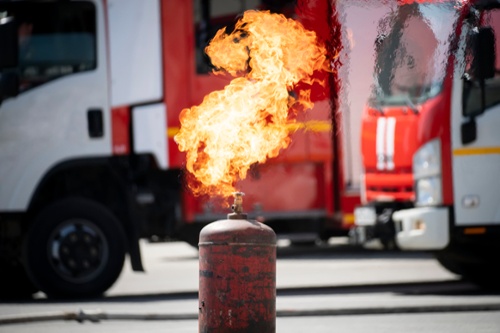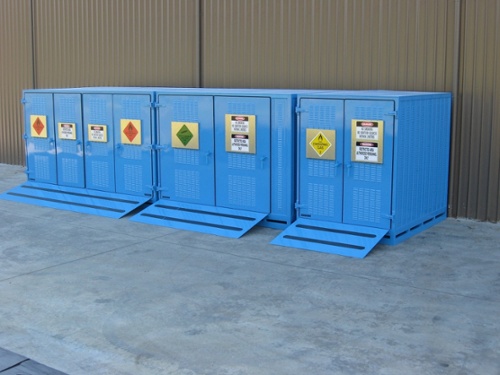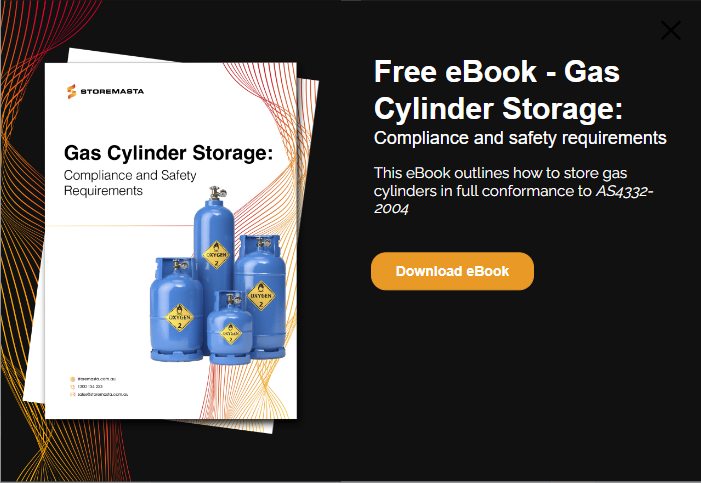Effective safety training is critical to workplace safety at worksites that store and handle dangerous goods. In this post, we’re focusing on handling gas bottles correctly through dedicated gas cylinder safety training. We’ll be referencing some of the requirements of the Australian Standards to detail essential training tips for the handling of compressed gas cylinders.
IMPORTANT: Refer to AS 4332 - The storage and handling of gases in cylinders is the Australian Standard for all the important information relating to gas handling and safety in the workplace.
1. Gas Cylinder Safety Inductions
Induction training is the foundation to ensuring that your employees, contractors and their staff, as well as site visitors all understand the gas cylinder hazards and risks they are likely to encounter while on your premises.
Even though the Standard doesn’t specifically mention induction training, it does require that staff and contractors understand the:
- Safety rules of the site, including restricted areas, safe access points/exits, prohibited activities (smoking etc) and the personal protective equipment they are required to use.
- Hazards associated with the gas cylinders likely to be encountered on the premises.
- Conditions and obligations of contractor’s work permits, especially confined space entry.
- Emergency evacuation procedures.
An effective safety induction will cover all these areas, plus include a full site walk around pointing out the location of dangerous goods, as well as the emergency exits and evacuation points.

Basic safety training, including how to identify and control hazards associated with your compressed gas cylinders, is an essential consideration for workplaces.
Safety Inductions should be conducted before entry to the worksite and considered awareness training only — they must be followed up with comprehensive job training as appropriate to the specific tasks being performed.
IMPORTANT: To learn more about gas cylinder safety in the workplace, you can read our popular post ‘Gas Bottle Storage Requirements’.
2. Compressed Gas Cylinder Hazard Training
The Australian Standard requires that all personnel handling gas cylinders must fully understand the chemical properties and physiochemical hazards of each specific gas they are using.
Staff must be introduced to the safety data sheet (SDS) for each gas, so they can understand how the compressed gas cylinder could harm them or the work environment.
Depending on the gas, the training would cover:
- Exposure injuries from toxic and corrosive gases.
- Asphyxiation hazards.
- Frostbite and cold burn injuries from liquefied gases.
- Fires and explosions caused by ignited flammable gases.
- Spontaneous combustion inspired by oxidisers and self-reactive gases.
- Violent chemical reactions from incompatible substances.
- Explosions from overheated cylinders.
- Different types of manual handling injuries.
- Impact injuries from out-of-control cylinders.
Hazard training can be introduced in a safety induction and then followed up during formal training sessions or on-the-job tool box talks. During this training your staff must understand the applicable safety regulations and safe handling procedures.

Any chemical or physiochemical hazards associated with your gas cylinders should be considered when conducting hazard training.
3. Personal Protective Equipment
Personal protective equipment (PPE) can only reduce exposure to hazardous chemicals if the equipment is selected, used and maintained correctly.
Making sure that staff and contractors use PPE in a safe manner is not only important for health and safety, it’s essential for WHS compliance.
The Australian Standard AS 4332 explains that all personnel employed at your premises must be trained in the correct use of PPE, as well as it’s care and maintenance.
We suggest the following points be included in your gas cylinder PPE training:
- Knowing where the correct personal protective equipment is located.
- Quickly inspecting the equipment prior to daily use.
- Using personal protective equipment (PPE) in a safe way, including how to put on and take off the equipment.
- Caring for and maintaining personal protective equipment to ensure compliance.
- How to alert a supervisor if damage to the equipment is identified.
The type of equipment that you will require for gas cylinders depends on the hazards associated with the gas division. The Standard explains that equipment, including overalls, protective gloves, safety footwear and eye protection, is required where gas cylinders are handled and stored. Hearing protection must be always carried by staff who are moving gas cylinders — to be used when needed.
If toxic gases are stored or handled, self-contained breathing apparatus must be supplied.
Training staff to use PPE correctly involves demonstration, then providing ongoing supervision to ensure they are not only competent, but consistently use the PPE every time they handle gas cylinders.
4. Job Knowledge
Once staff understand the chemical properties and hazards associated with each of the gases and cylinders being handled, the Standard also requires they be given specific manual handling instructions.
These gas cylinder instructions are required so that staff understand what to do when moving, changing, unloading and handling gas cylinders.
The safe handling of gas cylinders training should include instructions on:
- Always using trolleys and mechanical lifting devices for gas handling.
- Making sure cylinders are always upright.
- Individually restraining cylinders with a safety strap or chain.
- Work methods prohibited under the Standard eg, carrying cylinders by the valve, dropping cylinders from a truck, rolling cylinders along the ground.
- How and where to store gas cylinders to minimise hazards.
Handling and storing your dangerous gases correctly is an essential part of site safety in any operating that manages dangerous goods.
5. Emergency Procedures for Gas Cylinder Hazards
Everyone onsite needs to know what to do in an emergency. And for worksites that use and store compressed gases in cylinders, emergency training begins on-the-job.
Staff need to know how to respond to gas leaks or dropped cylinders, the location of first aid equipment and safety showers, plus who to notify and how.
REMEMBER: When dealing with a cylinder leak of a Class 2.3 Toxic Gas, staff may need to be trained to safely use and wear self-contained breathing apparatus.
Emergency procedures will always be driven by your risk assessment and include a response to worst-case scenario events like fires, explosions and release of toxic gas clouds. Managers and supervisors need to know how to work with emergency responders and fire crews. They will also need to fully understand their responsibilities in handing over the manifest of dangerous goods (which will include the location and quantities of all the gas cylinders onsite).
Manager and supervisors also need to ensure the safety of their workers, and regular response and evacuation drills help reinforce these responsibilities and get everyone understanding their individual roles. Who needs to apply first aid, who needs to direct evacuating staff, and who needs to follow instructions and get clear.
6. Gas Cylinder Safety Retraining
The Standard is very clear that safety training must be ongoing — it is not enough to put a staff member through an induction once and expect they will always know what to do.
You must also ensure that staff are retrained whenever:
- Work or safety procedures change.
- Staff demonstrate substandard performance.
- Staff have spent time away from their regular duties (maternity leave, injury, site transfer).
A commitment to ongoing training requires diligent managers and adequate supervision. And even though not mentioned in the Standard, staff training may also be necessary after a near-miss or critical incident involving gas cylinders.
Gas Handling Safety
Thanks for reading our post on safe handling of gas cylinders training. If you work with compressed gas cylinders at your worksite, we recommend that you access your free eBook.
Gas Cylinder Storage: Compliance and safety outlines the requirements of AS4332 - The storage and handling of gases in cylinders. Our easy-to-read guide explains how to manage risk at your workplace through the implementation of compliant gas cylinder storage. Download a copy now to find out how to store gas cylinders and improve site safety.
Joining the team as a Dangerous Goods Storage Consultant, Melissa Hampton became Storemasta's Marketing Manager in late 2021. With extensive knowledge and experience in chemical compliance, Melissa is responsible for leading the Marketing team and helping shape their marketing strategy. In her spare time, you can find Melissa hiking, swimming and enjoying the great outdoors in beautiful north-west Tasmania.

